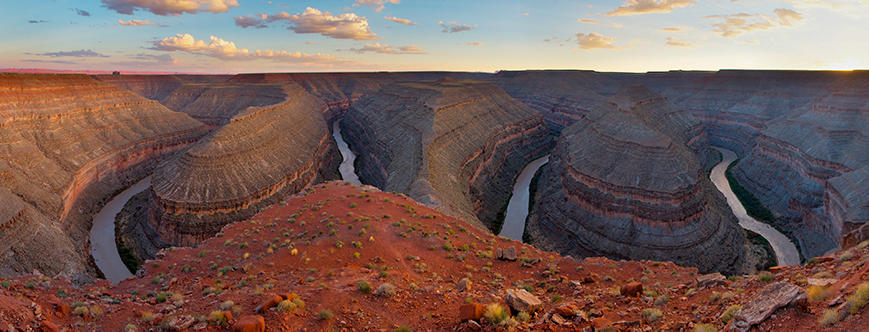
The San Juan Watershed is vast, covering state and tribal lands over 7 jurisdictions in the Four Corners area including: Colorado, Southern Ute, New Mexico, Ute Mountain Ute, Navajo Nation, Utah, and Arizona. The San Juan River itself is approximately 355 miles long and originates in the San Juan Mountains in southwestern Colorado. It flows westerly into New Mexico and is detained in the Navajo Reservoir. The river continues into southern Utah and ultimately terminates in Lake Powell in Utah. A major tributary to the San Juan is the 126-mile long Animas River that originates in the mountain peaks northeast of Silverton, Colorado, and flows southward where it eventually enters the San Juan River in Farmington, New Mexico. Water resources in the watershed are important for recreational, agricultural, biological, cultural, and residential uses.
On August 5, 2015, a large release of metal-laden mine water – now known as the Gold King Mine spill – was discharged into Cement Creek, a tributary to the Animas River in Colorado. EPA modeled and predicted that the metals released during this event traveled downstream to the San Juan River, and eventually settled in the sediments of Lake Powell in southeastern Utah.
In 2016, under the Water Infrastructure Improvements for the Nation (WIIN) Act, the U.S. Congress authorized appropriations of $4 million per year in 2017–2021 for a long-term water quality monitoring program for the San Juan River watershed. The Environmental Protection Agency (EPA) and the states and tribes adjoining the watershed—Arizona, Colorado, New Mexico, Utah, the Navajo Nation, the Ute Mountain Ute Tribe, and the Southern Ute Indian Tribe—are working together to develop and implement the long-term water quality monitoring program. These groups will:
- Develop collaborative, annual water-quality and sediment monitoring plans and determine the need for additional monitoring.
- Communicate information about the condition of the watershed to the public.
- Conduct targeted monitoring and research activities to inform state and tribal decisions for watershed management.
DEQ is currently working with a variety of partners on several projects in the San Juan River watershed that will ultimately provide the necessary information to guide research moving forward and identify remediation strategies to address mine-associated contaminants.
For additional information, please contact Lucy Parham ([email protected]).

